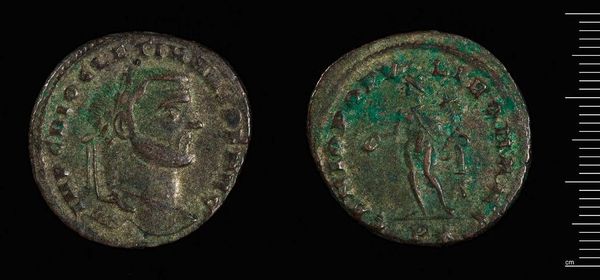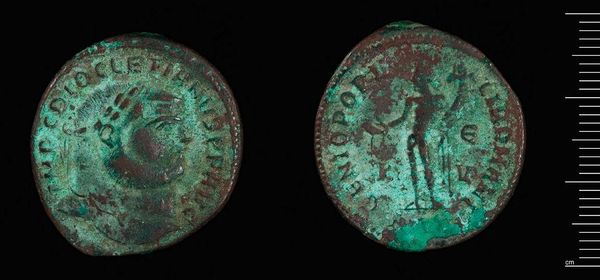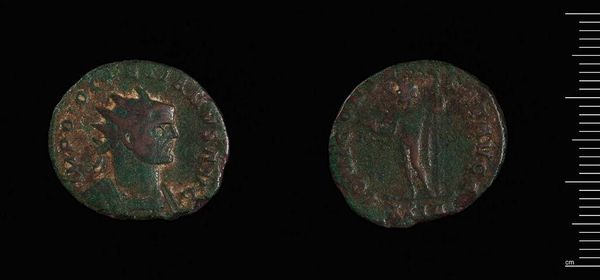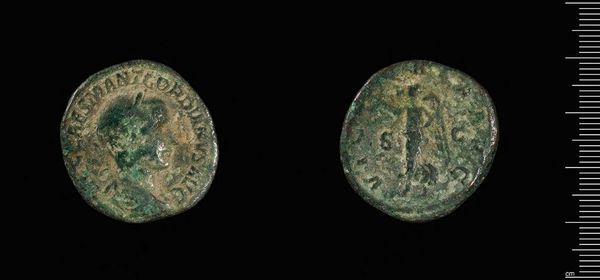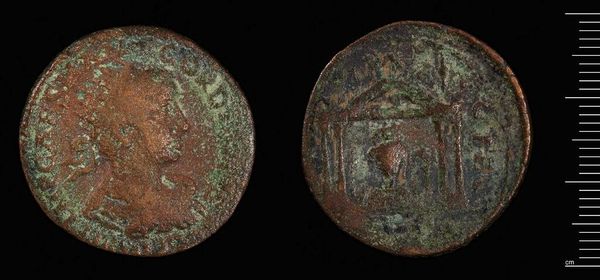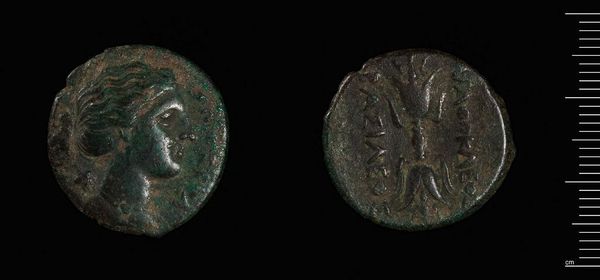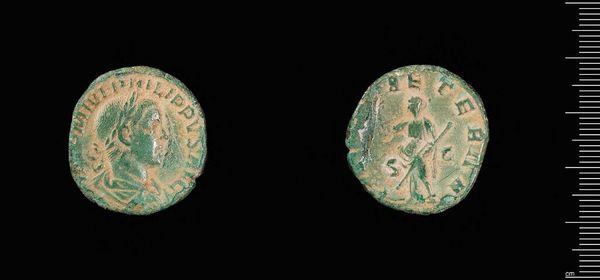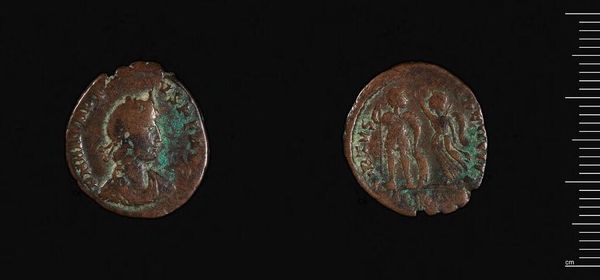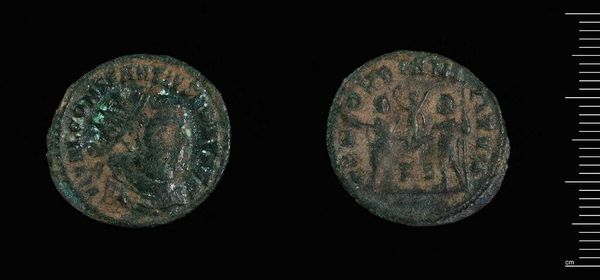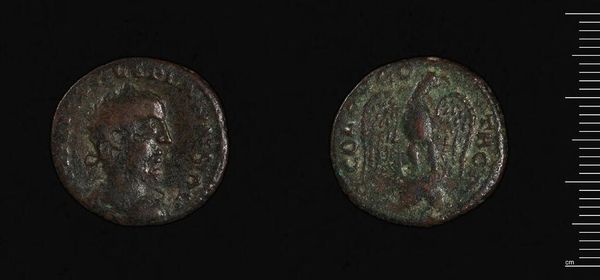
Dimensions: 8.7 g
Copyright: CC0 1.0
Editor: Here we have a Follis of Galerius from the Harvard Art Museums. It's worn, but you can still make out the portrait of a man on one side. What significance did these coins hold in their time? Curator: Coins like this weren't just currency; they were tools of imperial propaganda. Galerius, like other emperors, used them to project power and legitimize his rule across a vast, diverse empire. How do you think the imagery relates to his political ambitions? Editor: I suppose by circulating his image, it’s like he's saying, "I'm in charge," reinforcing his authority. The symbolism on the other side must also play into that? Curator: Precisely. The symbols, inscriptions, and even the coin's weight were carefully chosen to convey specific messages to the public. It reveals how rulers sought to control their image and message through mass media. Editor: That's fascinating. I hadn't considered how much political weight something as simple as a coin could carry. Curator: Indeed. It shows us how art, even in its most utilitarian form, is deeply intertwined with power and societal control.
Comments
No comments
Be the first to comment and join the conversation on the ultimate creative platform.

